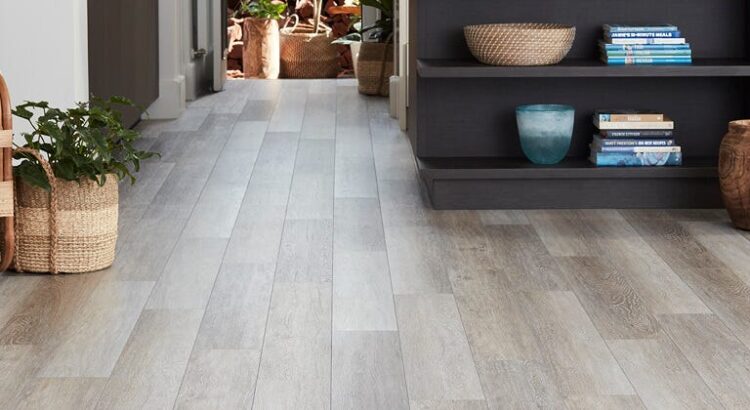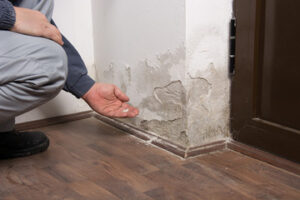Flooring Fairfield NJ plays a major role in the look, feel, and function of your home. From poured concrete to classic hardwood, there are options for every style and budget.
Consider your family’s lifestyle to help decide on the best flooring for your home. For example, if you have kids and pets, tile stands up to wear. For a commercial office space, rugged vinyl rolls or tiles may be the answer.
Tile is one of the most popular flooring options among homeowners and businesses. It is available in a wide variety of colors, textures, sizes, and materials. Whether you want a geometric pattern or something more natural, the design possibilities are endless.
When properly installed, tile floors are extremely durable and long-lasting. They also resist stains and can be easily cleaned with a mop or cloth. Many types of tiles are available, including ceramic, porcelain, and stone. Tile can be used in a variety of spaces, including kitchens and bathrooms, living rooms, bedrooms, and even patios and pools.
A primary benefit of tile flooring is that it is easy to clean and doesn’t harbor dirt, dust, or pollen like carpet does. This can significantly cut down on allergy symptoms for people who live with these conditions. Additionally, tiles are resistant to scratches and dents, making them an ideal option for areas that receive high amounts of traffic.
While tile is not as soft as other types of flooring, it is still a comfortable material for standing on for extended periods of time. It can be made more comfortable by installing an underlayment to cushion the feet.
Another great feature of tile is that it can be laid in a variety of patterns to add visual interest and make the space more dynamic. For example, a herringbone, brick, stacked, or chevron pattern can be added to the floor to create a unique look.
Before beginning the installation process, it’s important to prepare the subsurface by removing any existing flooring, vacuuming or sweeping to remove dirt and debris, and using a level to ensure the surface is flat. Once the tiles are chosen, they should be acclimatized for 48-72 hours before laying. After the tiles are prepared and ready for installation, they’re applied to the substrate using a trowel and adhesive. Typically, a grid layout is used in which tiles are placed side-by-side to form a repeating pattern.
Most tiles are manufactured from natural materials such as clay and minerals, so they can be considered environmentally friendly. They are also fired in kilns at extreme temperatures which removes any volatile organic compounds (VOC) from the material.
Stone
Stone is a luxurious flooring option with a natural, earthy aesthetic that brings a touch of the outdoors into living spaces. It also is durable and long-lasting, so it holds up to the wear and tear of everyday life. The multitude of different types and styles available gives homeowners the flexibility to find the best fit for their space.
The most common stone flooring materials are granite, travertine, slate, limestone, and sandstone. Each has its own unique characteristics, but all are suitable for use as floor tiles. Some of the most important considerations when choosing a stone type are its strength, how it holds up to moisture, and how it will stand up to impact damage.
A key advantage of using stone is that it’s non-polluting, a fact that makes it ideal for people who want a healthy home environment. It also requires less energy to mine than some other types of flooring, which is great for the planet. Some stones can be sourced locally, cutting down on transportation costs and environmental impact.
One thing to keep in mind when considering stone is that some are more porous than others, which can make them susceptible to staining and cracking in damp environments. Some stone floors are treated with resins to close the pores, while other types of natural stone can be sealed using commercial products.
In addition, it’s crucial to consider the coefficient of friction (COF) of a stone tile, which measures how slippery a surface is. The lower the number, the more slippery a tile is. This is an important factor when deciding on a material for moist environments like bathrooms and kitchens, or for high-traffic areas where slip-and-fall accidents are more common.
Fortunately, modern manufacturing processes have made it possible to create stone-effect porcelain tiles that are both attractive and durable. These are a great alternative to traditional stone and come with the added benefit of easier cleaning and maintenance instructions.
Hardwood
Hardwood floors are a classic choice that can’t be outdone for beauty, elegance and longevity. They increase the value of your home and are a beautiful addition to any room.
There are a variety of species of hardwood available, each with its own coloring and grain pattern. Oak, hickory and ash are among the most common choices. Each has its own unique characteristics, such as hardness and durability.
Solid wood floors can be sanded and refinished many times over the years, giving them the potential to last for generations. Unlike carpet, which traps dust mites and other allergens, solid wood floors are a hygienic choice for those with allergies. The smooth surface of a hardwood floor is a non-porous surface that doesn’t harbor dust, odors or bacteria, making it an ideal choice for families with young children and pets.
Wood is our greatest renewable resource. As with all natural products, it is important to buy hardwood that has been harvested ethically and responsibly. This will ensure that the harvested tree is replanted to replenish the forest, and that the trees harvested in the past have been replaced to maintain the integrity of the ecosystem.
One way to ensure this is to purchase solid wood floors that are certified by a recognized authority. There are several certification bodies, including the FSC (Forest Stewardship Council), which certifies hardwood flooring that is harvested in a sustainable manner.
Another important consideration is the type of finish on the wood. Solid hardwood comes in a variety of finishes, including satin, matte, semi-gloss and gloss. The sheen you choose will affect how much light reflects off the floor and will impact the overall look. Matte and satin finishes offer the least amount of sheen, while glossy floors reflect more light.
A reputable company will explain the different types of finishes and the effect they will have on the floor’s appearance. They should also discuss the climate of your location and how it affects hardwood floors, as humidity can cause the boards to swell and shrink. This may require the use of a humidifier during the winter and dehumidifier during the summer.
Carpet
Carpet is a traditional flooring option that provides warmth and comfort to your living space. It also helps to reduce noise and insulates your home, reducing utility costs. It is versatile and offers a variety of colors, structures and styles to compliment your room’s decor.
The fibers used in carpeting can be natural or synthetic, with nylon and wool being popular choices. Wool carpets are durable, resist fading and tend to be more stain-resistant than nylon. Sisal, jute and cotton are other natural fibers that are often used in carpeting.
When choosing a carpet, consider the amount of traffic your rooms will receive as well as the color of your walls and furniture. A darker carpet will hide dirt and stains better while light colors can make smaller rooms look bigger. If you have children or pets, consider choosing a thicker fiber type that can resist wear and tear from active play.
Carpeting can be woven on a loom like woven fabric, knotted by hand (in oriental rugs), made with its pile injected into the backing material, or tufted by hand or machine using tightly twisted yarns of both wool and synthetic materials. Many modern carpets are tufted and use polypropylene or polyester for the backing.
Pile style determines the texture of your carpet. Cut pile has long, cut fibers that are densely packed and can be a bit harder on the feet due to the ridged surface. It’s best for formal areas with low traffic. The twist of the individual fibers can affect its durability. The more the twist, the more resistance it has to matting and crushing.
Loop pile carpets have a textured appearance and are typically found in high-traffic areas of the home. The individual loops of the fibers are either twisted or left straight, and they can hold dye very well, making them a great choice for areas that need to be durable and dependable.
When selecting a color, keep in mind that carpets are not as resistant to fade as hardwood floors and will fade over time with exposure to sunlight. Consider a carpet that is solution dyed, which adds color during the fiber creation process, for a carpet that will maintain its beauty and vibrant hues for longer.


